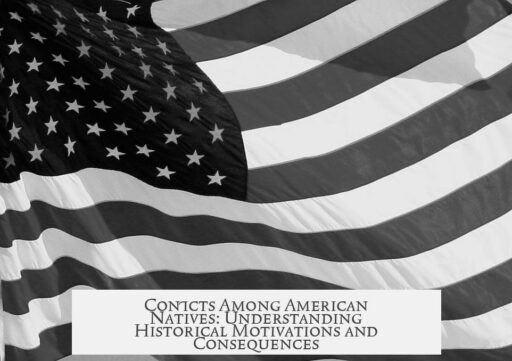Wars between American Natives were common and complex, occurring long before European contact. These conflicts involved diverse tribes and were driven by various motives such as prestige, resources, land, and retaliation. Evidence shows that many Native American societies engaged in intense and sometimes brutal warfare with one another.

Pre-Columbian Native American societies often fought each other, although knowledge about these conflicts is limited. Native oral traditions, archaeological findings, and early European accounts reveal warfare was frequent. Conflicts aimed at gaining slaves, avenging wrongs, expanding territory, or during times of scarcity were typical. Large-scale wars often accompanied climate stress or migration impacts. Warfare was deeply woven into many tribes’ social and cultural fabric.
Several notable examples illustrate intertribal warfare dynamics. The Iroquois Confederacy, formed after centuries of internal fighting, united to confront the Cherokee, who themselves faced constant struggles with neighbors. The Comanche tribe rose to dominance over the Great Plains by conducting aggressive raids. Their warfare style was known for brutality and ruthlessness, feared by surrounding groups.

The Cherokee expanded their lands, causing conflicts with multiple neighboring tribes without involving European powers. Similarly, the Sioux pushed out other tribes like the Arikara, Cheyenne, and Crow from the Black Hills area in a process of territorial conquest. The Mexica, later known as the Aztecs, were displaced by the Dine and Apache from northern locations—probably around the Colorado Plateau—before settling in central Mexico.
In northern Canada, the Inuit and Cree waged a centuries-long conflict over vast territories. Despite the Cree having access to firearms well before the Inuit, the war only ceased once the Inuit acquired guns in the late 18th century. This sustained warfare underscores that Native American conflicts could last generations, influenced by evolving technology.

European contact drastically altered Native American warfare patterns. The arrival of Europeans brought diseases and social disruption that devastated numerous established societies. Tribes European explorers encountered were often remnants of previously well-organized groups fractured by epidemics and warfare.
The transformation of the Great Plains population highlights this impact. Once home to many settled peoples, European disease and horse-mounted warfare decimated communities, forcing survivors to adopt nomadic buffalo-hunting lifestyles. The introduction of the horse gave some tribes a strategic advantage, intensifying warfare and reshaping territorial control.

Understanding Native American warfare requires recognizing the diversity and independence of each tribe. Names given to tribes typically mean “people,” referring only to their own group. Different tribes seldom regarded others as “people,” fueling continuous conflicts. This tribal particularism makes broad generalizations about Native American warfare misleading and potentially harmful.
Context matters greatly. Examining Native wars in the same way as European conflicts—by exploring causes, events, and consequences—provides clearer insights into their nature. Some historians challenge the belief that Native Americans were always peaceful before European colonization. Treating all native groups as a monolith ignores the specific historical realities and dynamics of each culture.

However, warfare was not the only way tribes resolved disputes. Sports tournaments and extended games sometimes provided alternatives to battle over hunting or fishing grounds. These events reduced warfare frequency but did not eliminate the risk of violent clashes if results were contested.
Many Native American tribes practiced scalping during warfare, which included non-combatants like women and children. This act was often seen as a symbol of war victory and not shameful. Violence could be severe and brutal, reflecting the harsh realities of tribal conflicts and retribution practices.

| Aspect | Details |
|---|---|
| Common Causes | Prestige, resource control, revenge, territory expansion, climate stress |
| Notable Conflicts | Iroquois vs. Cherokee, Comanche dominance, Sioux expansion, Inuit vs. Cree |
| European Impact | Disease, social breakdown, horse introduction, nomadism rise |
| Conflict Resolution | Warfare and multi-day sports tournaments |
| War Practices | Raiding, scalping, capturing slaves, brutal violence |
- Wars between Native tribes were frequent before European contact and shaped societal structures.
- Intertribal warfare was influenced by environmental, social, and political factors.
- European diseases and horses transformed warfare dynamics and tribal lifestyles.
- Each tribe had distinct practices and motivations, resisting broad generalizations.
- Alternative dispute methods like sports tournaments sometimes reduced but did not end conflict.
- Scalping and other violent acts were accepted aspects of warfare among many tribes.
Wars between American Natives: Unpacking the Complex History
Were there wars between Native American tribes before Europeans arrived? Absolutely. It’s a topic often brushed aside or romanticized as peaceful interactions among “noble savages.” Reality hits differently. Pre-Columbian native societies were complex, dynamic, and—yes—often engaged in brutal warfare. Let’s dive into this fascinating history that challenges popular narratives.

First, it helps to clear a misconception. Many people think that without Western ideals or modern nation-states, Native Americans lived in a perpetual harmony. The truth is that tribes fought frequently, for many reasons, and sometimes committed acts that today we would call war crimes. This wasn’t mindless violence. It was driven by survival, power, prestige, and resources. Pre-Columbian Native America was far from a peaceful utopia.
Warfare was common, but why?
It might surprise readers to learn that Native Americans fought wars for a variety of reasons—prestige, revenge, slave acquisition, and expansion. Climate fluctuations and resource scarcity often triggered larger conflicts. Migration and territorial disputes led to invasions and battles over land. The native oral traditions, archaeological clues, and European accounts after contact all confirm this reality.
So, what does that look like in real-life historic examples? Consider the centuries-long conflicts between the Iroquois and the Cherokee. The Iroquois fought among themselves for ages before uniting in a confederation. They then launched attacks against the Cherokee, who themselves were engaged in nearly constant territorial disputes with neighbors.
Examples that pack a punch
- Comanche Dominance: Imagine a tribe so feared that their name alone sent chills across the Great Plains. The Comanche were just that. They built a warrior culture centered on raiding and war. Their savagery was legendary, leaving neighbors wary and sometimes terrified.
- Cherokee expansion: The Cherokee actively grew their territory, sparking confrontations with surrounding tribes. These expansions weren’t facilitated by Europeans but were driven by internal ambitions, showcasing that Native American geopolitics were complex and independent.
- Sioux displacement: The Sioux tribe pushed out the Arikara, Cheyenne, and Crow from the Black Hills, reshaping the region’s tribal map well before European interference.
- Mexica origins: It’s fascinating that the Mexica, later to become the Aztecs, were possibly chased from the Colorado Plateau area by the Dine and Apache tribes. This forced migration led them to the Valley of Mexico, changing North American history forever.
- Inuit and Cree wars: The Inuit and Cree fought for centuries in northern Canada. Despite the Cree having guns a century before the Inuit, the conflict ended only when the Inuit finally acquired firearms themselves.
What about European contact? Did it calm things down?
Far from it. European arrival often made native warfare worse. But first, consider that European explorers encountered Native societies already damaged by diseases and social upheaval brought on by initial European contact outside direct encounters. The massive death toll and chaos weakened established tribal structures. What Europeans saw was often a shadow of native societies flourishing before colonization.
The Great Plains, for example, were once home to many settled peoples. After European diseases and military pressure, many survivors became nomadic buffalo hunters. The strategic introduction of horses by Europeans transformed warfare on those plains drastically.
Contexts and motivations matter
Here’s a crucial insight that challenges simplistic views: almost every tribal name means “people.” Tribes regarded others as outsiders, “not people.” This worldview made conflicts frequent and ruthless. Treating Native Americans as a monolithic group hides this reality and risks misinterpreting conflicts as irrational or senseless.
Unlike broad generalizations, digging into the context shows you these wars followed logical sequences of events, motivations, and power shifts. Just like the Europeans’ Hundred Years’ War had causes and effects, so did Native American wars.
However, war wasn’t the only option. Native Americans sometimes used multi-day sporting contests to resolve disputes peacefully—especially over hunting or fishing grounds—avoiding bloody battles annually. Still, sportsmanship wasn’t always perfect, and disputes could turn violent.
The brutal side: war crimes and cultural realities
Scaling was a grim reality. Native warriors didn’t only scalp enemy warriors—they often scalped women and children too, showing just how brutal some conflicts became. This practice was part of their way to claim victory and intimidate rivals. Of course, such actions shock modern sensibilities, but it’s essential to understand them within their cultural and historical context.
What can we learn from this?
Studying the wars between American natives reveals a history full of complexity. It dismantles the myth that Native American societies were always peaceful or static. Instead, they were vibrant, political, and sometimes violent cultures shaped by their environments and needs.
Understanding this history helps us appreciate native peoples’ agency and diversity. It offers a nuanced view beyond the simplistic “good vs. bad” or “peaceful vs. savage” narratives often found in popular media. This fresh perspective fosters respect for Native American history as dynamic and real, not frozen in a bygone romantic myth.
Practical takeaways
- When reading or teaching Native American history, avoid generalizations that lump tribes together.
- Consider environmental, social, and political factors that led to specific conflicts.
- Recognize the adaptive strategies, like sports contests, used to prevent excessive warfare.
- Respect that brutal practices like scalping were part of the warfare culture, not outliers.
- Remember European contact reshaped native warfare drastically, often worsening conflicts.
So the next time someone tells you that the Native Americans only lived in peace before Europeans came, you’ll know better. Wars were as much a part of their story as their art, spirituality, and resilience. The truth, as always, is more complicated—and infinitely more interesting.




